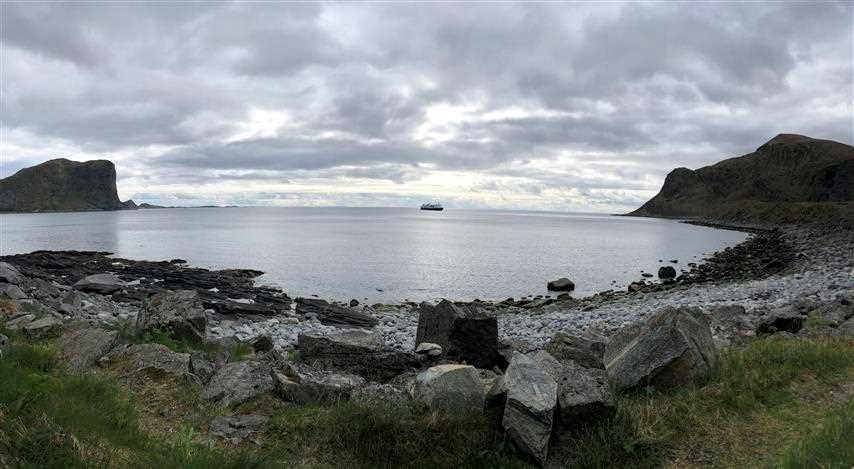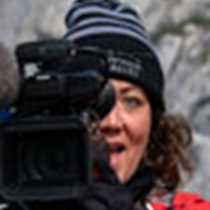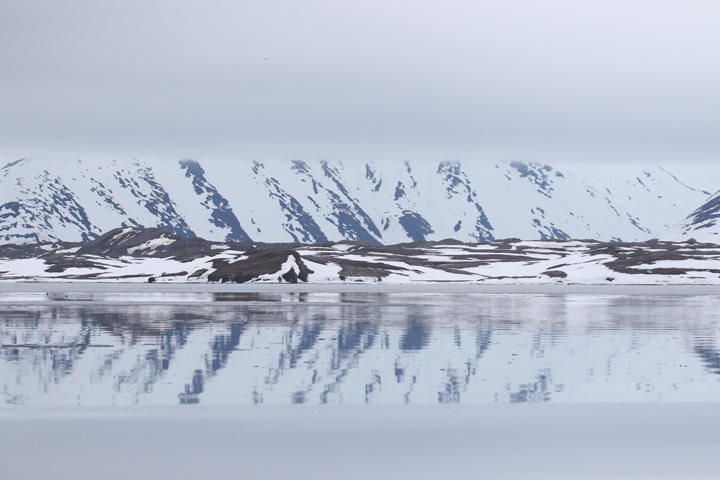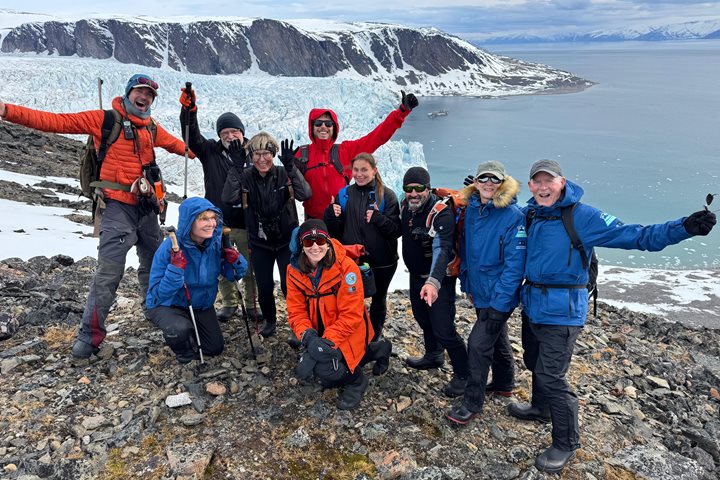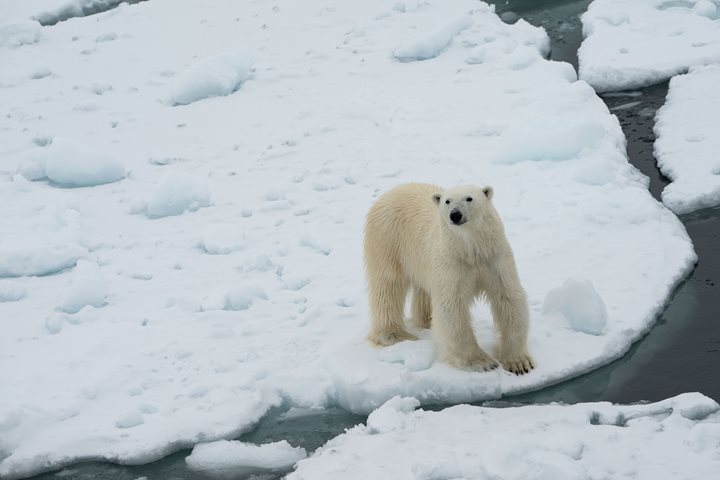The day’s adventures brought us to the Lofoten Archipelago. Our first morning stop was at the beautiful, scenery of Vaeroya Island, where we visited the abandoned fishing village of Mastad.
The village was once home to a bustling community of 150 people. Today it is a ruinous group of houses slowly being reclaimed by nature, with a few holiday homes interspersed. The people who once lived here were highly dependent on the sea, making their living from fishing and harvesting the island’s puffins for food, using a special breed of dog, the lundehund. Although the air around the bay was filled with razorbills, few puffins were spotted. It was a sad and stark reminder of the species’ plummeting numbers, linked to prey scarcity as a result of oceanic temperature increase.
We took our island visit as an opportunity to fit in a few longer hikes, which revealed some spectacular views. The bravest among us scaled the steep hill overlooking the small village, whilst most headed round to the opposite side of the island, following an old dilapidated cart trail. The trail revealed some wonderful views of plants and birds. Rose root, red campion, and scurvy grass littered the ground below our feet and black guillemots bobbed on the water, whilst majestic white-tailed eagles soared above us.
We returned to the ship suitably puffed out from a busy morning before sailing on our way towards Moskenesoya Island and the famously beautiful fishing village of Reine. Reine is 100 kilometres above the Arctic Circle, and for a small village of just over 300 inhabitants, it had a lot to offer. We learned all about the rich cod fishing history of the town and saw huge swathes of cod fermenting in the breeze.
After dinner and recap, we cruised into Trollfjord, a spectacular and enchanting chasm of rock cutting down into the deep, freezing waters.
After a long day, we went to bed excited for another day in the Norwegian fjords.

